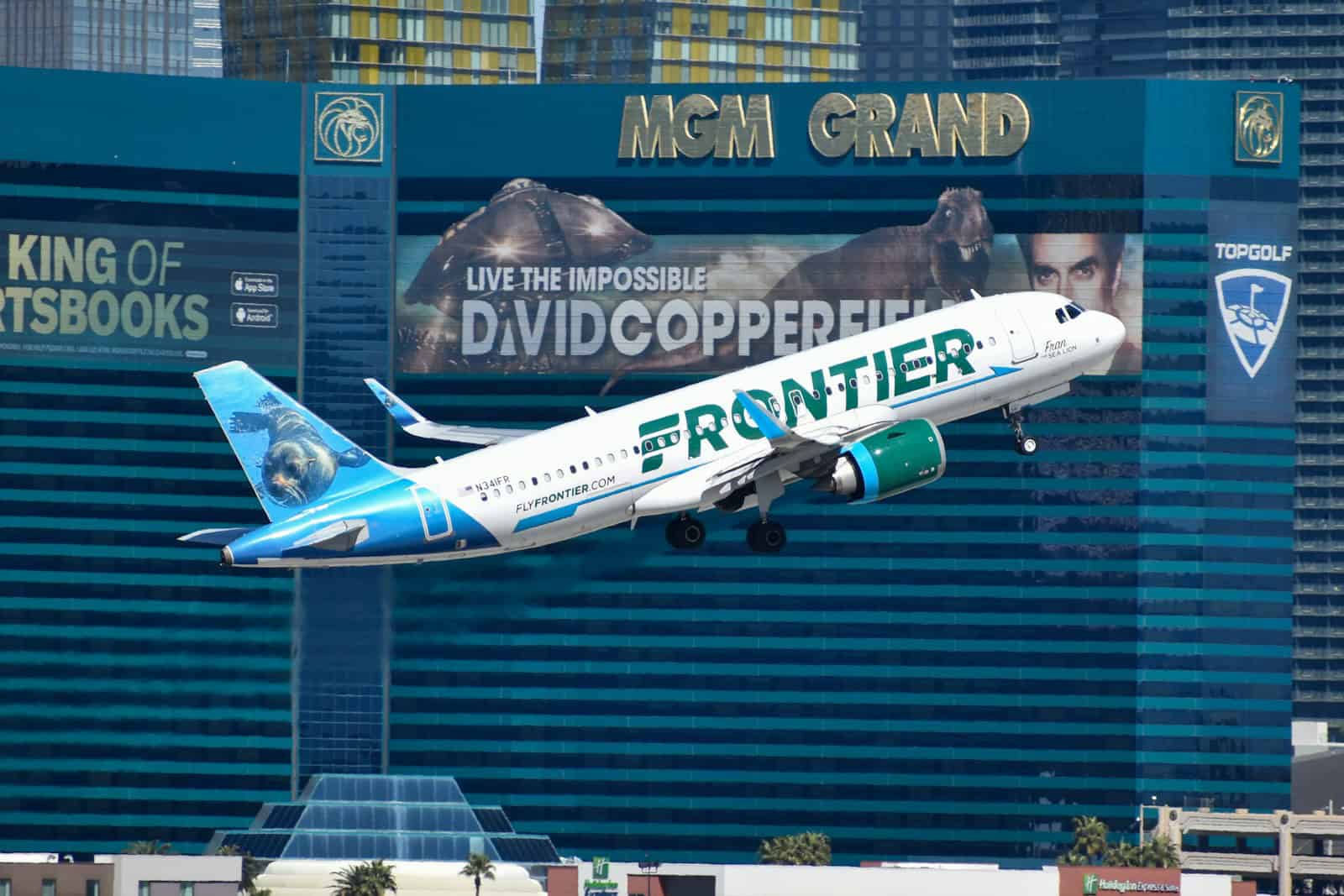
Low-cost carriers like Frontier Airlines are facing a wave of financial turbulence that may redefine the economics of air travel in the U.S. After years of growth fueled by rock-bottom fares and aggressive expansion, 2025 is shaping up to be a year of contraction and recalibration.
Frontier’s recent announcement to slash nearly 20% of its summer flights underscores a deeper trend affecting the entire budget airline sector.
A Harsh Headwind for Low-Cost Carriers
Frontier plans to reduce its flight schedule by 19.3% between May and September 2025, compared to the same period last year. This is not a one-off decision—Spirit Airlines and others are following suit, trimming routes and scaling back expansion plans. The reasons are complex: rising operational costs, softening consumer demand amid economic uncertainty, and a narrowing price gap between budget and legacy airlines.
Historically, budget airlines thrived by filling planes with price-sensitive travelers looking for bare-bones service. But today, full-service carriers like Delta and United are matching low fares in competitive markets while offering amenities that Frontier and Spirit can’t compete with—free carry-ons, broader route networks, and more reliable on-time performance.
Fare Wars, Economic Drag, and Shrinking Margins
The financial pressure on budget carriers has intensified due to inflation, increased wages, and higher fuel prices—costs that are harder to absorb with thin-margin business models. According to Frontier’s Q1 earnings, revenue per passenger dropped roughly 6% year-over-year. The airline expects a continued loss through Q2, with earnings projected to fall between $0.23 to $0.37 per share in the red.
On the other hand, legacy airlines—despite carrying higher operating costs—are proving more resilient. Their diversified business models, including lucrative international routes and premium cabin offerings, have helped cushion the blow of weakening domestic demand. These carriers are even expanding flight offerings this summer, taking advantage of the retreat by low-cost competitors.
A Turning Point in the Industry?
This moment could represent a major pivot in U.S. air travel. For over a decade, budget airlines pushed the industry toward ultra-cheap base fares with à la carte pricing. But the sustainability of that model is now in question. Travelers burned by delays, fees, and cutbacks are increasingly opting for more dependable service—especially when the fare difference is marginal.
Still, Frontier isn’t throwing in the towel. CEO Barry Biffle has emphasized that the airline is adapting its strategy to focus on higher-yield routes and increasing revenue through optional services and loyalty programs. Frontier is also rolling out premium seating and perks like free companion tickets for elite members in a bid to win over more frequent flyers.
The Road Ahead
Whether these changes are enough to reverse the tide remains to be seen. The key challenge is that the traditional advantages of budget carriers—lower fares and simplified service—no longer hold the same appeal in an era when consumers are prioritizing reliability, convenience, and transparency.
If the current trends hold, the skies ahead may belong more to hybrid models and traditional airlines that blend affordability with comfort. The budget airline slump isn’t just a temporary setback for companies like Frontier—it may be a sign that the golden age of ultra-cheap flying is coming in for a landing.
Key Takeaways
- Budget airlines are reducing flight capacity while legacy carriers maintain or expand their schedules in response to changing market conditions.
- Rising operational costs and shifting consumer preferences are forcing low-cost carriers to rethink their business models.
- The current airline industry slump may reshape the competitive landscape between discount and premium carriers in the coming years.
Current Challenges Facing Low-Cost Carriers
Budget airlines are experiencing unprecedented headwinds as travel patterns shift and economic pressures mount. Several factors have converged to create a perfect storm for carriers that once thrived on no-frills service models.
Frontier Airlines’ Recent Struggles
Frontier Airlines has become the poster child for budget carrier difficulties. The Denver-based airline is drastically reducing its footprint, cutting 19.3% of flights between May and September compared to the same period in 2024. This significant capacity reduction aims to protect profit margins amid falling demand.
CEO Barry Biffle acknowledged in a recent earnings call that the airline faces “temporary headwinds” but insisted its ultra-low-cost model remains viable long-term. The carrier’s stock has plummeted nearly 40% year-to-date, reflecting investor concerns about its business model sustainability.
Flight cancellations and operational issues have further damaged Frontier’s reputation, creating a negative feedback loop as travelers become increasingly hesitant to book with budget carriers perceived as unreliable.
Rising Costs and Tariffs Impacting Budget Airlines
Economic factors are squeezing budget airlines from multiple directions. Trump’s trade tariffs are disrupting consumer spending patterns, reducing discretionary income available for travel.
Fuel costs remain volatile, presenting a particular challenge for carriers whose entire business model depends on keeping expenses minimal. Labor costs are also rising as employees across the industry demand better compensation and benefits.
Budget airlines face a difficult dilemma:
- Raise fares: Risk losing price-sensitive customers
- Maintain low fares: Watch profit margins deteriorate
- Add more fees: Further alienate frustrated consumers
Unlike major carriers that can offset domestic weakness with international routes and business travel, budget airlines primarily serve leisure travelers most sensitive to economic fluctuations.
Declining Consumer Confidence and Travel Demand
The travel industry is experiencing a broad demand slump, but low-cost carriers are being hit hardest. As the economy weakens, people who can’t afford to fly stop flying altogether, shrinking the budget airline customer base.
Consumer confidence metrics show increasing concern about personal finances, leading many families to postpone vacation plans. This trend disproportionately affects carriers like Frontier that rely heavily on leisure travelers.
Meanwhile, legacy carriers United and Delta have actually added flights, suggesting a segmentation in the market. Business travelers and higher-income leisure passengers continue flying with major airlines, while budget carriers lose their core demographic.
Security Measures and Additional Bag Fees
Consumer frustration with hidden fees has reached a breaking point. What initially appears as a $39 fare often balloons to $150+ after adding baggage fees, seat selection, and other extras.
Enhanced security measures have inadvertently benefited legacy carriers. When passengers must:
- Arrive earlier for screening
- Navigate complex security rules
- Endure longer processing times
The perceived value of a comfortable, reliable experience increases, undermining the budget airline proposition.
Bag fees, once a clever revenue source, have become excessive in consumers’ eyes. Frontier now charges up to $89 for a carry-on bag, nearly doubling the advertised base fare on many routes. This pricing strategy is backfiring as travelers grow weary of what they perceive as deceptive advertising.
Wider Industry Implications And Future Outlook
The budget airline market faces several converging challenges that extend beyond any single carrier’s financial struggles. Economic factors, competitive pressures, and technological developments are reshaping the entire landscape for low-cost travel options.
Potential Recession Risks for Travel and Tourism
Economic indicators suggest a potential recession could severely impact the already struggling budget airline sector. Travel and tourism typically experience rapid contraction during economic downturns as both leisure and business travelers reduce spending.
Historical data shows airline bookings often drop 15-20% during recessionary periods, with budget carriers sometimes experiencing steeper declines. Consumer behavior shifts dramatically when economic uncertainty rises, with many postponing vacation plans or choosing cheaper transportation alternatives.
Budget airlines operate with thin profit margins even in healthy economic conditions. Their business models rely on high passenger volume and quick aircraft turnarounds to generate revenue.
During economic contractions, these carriers face difficult choices between maintaining routes with reduced passenger loads or cutting service to preserve cash. Many analysts predict a wave of consolidation across the industry if recession conditions materialize.
Impact of Trade Wars and Supply Chain Uncertainty
The trade war initiated under the Trump administration has created significant headwinds for budget airlines. Tariffs have increased costs for replacement parts and new aircraft, putting additional pressure on maintenance budgets.
Supply chain disruptions continue to plague the aviation industry. Delayed deliveries of fuel-efficient aircraft have forced carriers to operate older, less economical planes longer than planned. Key aviation components face extended lead times, sometimes exceeding 6-8 months.
International route planning has become increasingly complex amid shifting trade relationships between countries. Budget carriers that expanded into cross-border markets now face unpredictable regulatory environments and fluctuating demand patterns.
Fuel costs remain vulnerable to trade-related price volatility. With fuel representing 20-30% of operating expenses, even small increases can significantly impact the viability of budget carrier routes and pricing strategies.
Competition from Other Carriers Like Southwest Airlines
Traditional budget leaders like Southwest Airlines have adapted their business models, creating intense competitive pressure for ultra-low-cost carriers. Southwest has maintained better financial stability while offering more amenities than bare-bones competitors.
The distinction between budget and full-service carriers has blurred. Legacy airlines now offer basic economy fares specifically designed to compete with budget carriers, often with the advantage of more extensive route networks and frequent flyer programs.
Discount carriers like Spirit and Frontier now face challenges from both directions – squeezed by Southwest’s stronger brand position and legacy carriers’ increased willingness to match low fares on competitive routes.
Industry experts note that carriers with diverse revenue streams and stronger loyalty programs have better weathered the current industry turbulence. The ability to generate ancillary revenue beyond base fares has become increasingly crucial.
Role of Data Analytics, Privacy, and Consent
Advanced analytics have become essential tools for budget airlines seeking to optimize pricing and operations. Carriers now employ sophisticated algorithms to predict demand patterns and dynamically adjust fares across thousands of routes.
Privacy concerns present growing challenges as airlines collect more passenger data. Regulatory frameworks like GDPR and CCPA have imposed new consent requirements that affect how carriers can use customer information for marketing and operational purposes.
Cookie policies and tracking mechanisms face increased scrutiny. Airlines must balance their need for customer insights with transparent privacy practices that maintain consumer trust.
Data-driven decision making has become a competitive differentiator. Airlines with superior analytics capabilities can better manage fleet utilization, crew scheduling, and fuel consumption – critical advantages in an industry where margins are razor-thin.
Frequently Asked Questions
Budget airlines face unprecedented challenges in 2025 with shifting market dynamics, operational pressures, and changing consumer behaviors creating a perfect storm for carriers like Frontier. These issues stem from multiple interconnected factors affecting the entire low-cost airline ecosystem.
What factors have led to the financial difficulties faced by Frontier and similar budget airlines?
Low-cost carriers are currently slashing capacity to protect profit margins amid a significant travel demand slump. This contraction contrasts sharply with legacy carriers like United and Delta, which have actually added flights during this period.
Rising operational costs have hit budget airlines particularly hard. Labor expenses, maintenance requirements, and airport fees continue to climb while these carriers struggle to raise ticket prices without losing their core value proposition.
Budget airlines also face intensifying competition from legacy carriers that have adopted aspects of the low-cost model while maintaining premium services. This competitive pressure squeezes profit margins from both directions.
How do fluctuating fuel prices affect the business model of low-cost carriers?
Fuel represents one of the largest expenses for any airline, but budget carriers face greater vulnerability to price fluctuations. With thinner profit margins, every increase in fuel costs directly threatens their financial stability.
Unlike larger airlines, many budget carriers lack sophisticated fuel hedging programs that could protect them from market volatility. This exposes them to immediate financial impacts when oil prices rise unexpectedly.
Low-cost airlines typically operate with maximum efficiency to keep prices low, leaving little room for additional cost-cutting when fuel expenses increase. This creates a difficult choice between raising fares and potentially losing customers or absorbing costs and endangering profitability.
In what ways have consumer preferences and expectations influenced the profitability of budget airlines?
Americans appear to be tiring of budget airlines, with consumer fatigue becoming a significant factor in the sector’s struggles. Passengers increasingly prioritize reliability and comfort over rock-bottom prices.
The add-on fee model that was once revolutionary has become a point of frustration for many travelers. Consumers increasingly prefer transparent pricing over seemingly low initial fares that balloon with baggage fees, seat selection charges, and other extras.
Service reliability has become a critical differentiator, with budget carriers often facing lower customer satisfaction scores. Frequent delays, cancellations, and customer service challenges have damaged brand loyalty and repeat business.
Can the market saturation of low-cost carriers be attributed to the current industry downturn?
The ultra-low-cost carrier segment has experienced significant growth over the past decade, potentially reaching a saturation point in many markets. This expansion has led to fierce competition for budget-conscious travelers.
Market data shows that stock prices for ultra-low-cost carriers have underperformed the broader airline market, suggesting investors recognize the structural challenges facing this business model beyond cyclical downturns.
Route overlap between competing budget airlines has intensified price wars, further eroding profitability. Many secondary markets can no longer sustain multiple budget carriers fighting for the same customer base.
What regulatory challenges are affecting low-cost airlines differently than traditional carriers?
Budget airlines often face greater scrutiny from regulators regarding their fee structures and advertising practices. Recent regulatory proposals aim to increase transparency in airline pricing, potentially undermining the add-on revenue model.
Frontier and similar carriers must navigate complex labor regulations while maintaining their cost advantage. Increasing pressure for improved working conditions and competitive wages challenges their fundamental business structure.
Environmental regulations and carbon offset requirements create proportionally higher compliance costs for budget airlines operating on thin margins. These carriers must balance sustainability requirements with their low-fare business model.
How do global economic trends impact the sustainability of low-cost airlines?
Inflationary pressures across the economy have affected budget airlines more severely than their full-service counterparts. Rising costs in everything from labor to airport fees become harder to absorb without raising fares.
Interest rate fluctuations directly impact fleet financing costs, a critical concern for budget airlines that frequently expand through aircraft purchases or leases. Higher capital costs make fleet renewal and expansion more challenging.
Not everyone agrees about the outlook, however. Frontier has indicated it doesn’t subscribe to the theory that legacy business models are better positioned for this down cycle, suggesting some budget carriers may still see opportunities amid the challenges.






